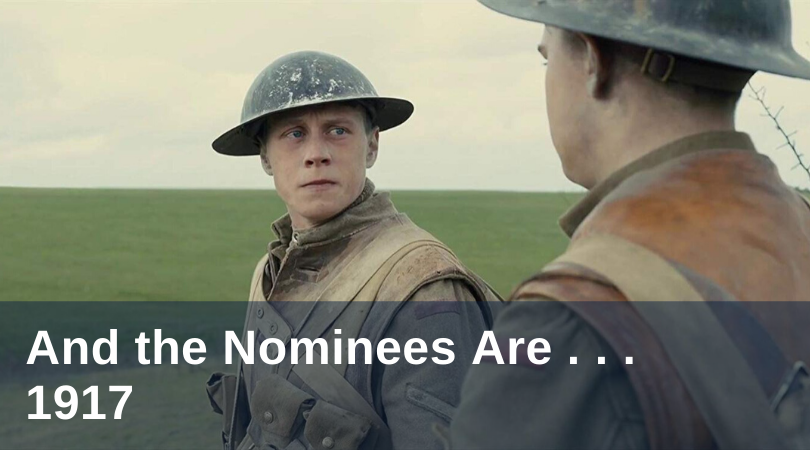
1917 is a movie about two young British soldiers in World War I, Lance Corporals Blake (played by Dean-Charles Chapman) and Schofield (George MacKay), who accept orders to cross nine miles of dangerous territory and deliver a message that will save the lives of 1,600 men, including the life of Blake’s older brother. As far as plots go, the setup of 1917 could hardly be simpler—take this envelope and give it to Colonel MacKenzie (Benedict Cumberbatch) by morning. Yet, the uncomplicated clarity of the journey-style plot permits the viewer to set aside the usual intricacies of war stories and descend into the trenches alongside two untested heroes.
It’s no secret that 1917 was filmed and edited to look like one continuous shot. That is to say, except for one prolonged blackout two-thirds through the movie, 1917 looks like the camera started rolling at the opening scene and never stopped recording until the final frame. Some have criticized director Sam Mendes for employing this technique, claiming that its use forced Mendes to add occasional filler, or that its overuse is distractingly self-indulgent. Whatever its shortcomings, the continuous shot has a major upside: it facilitates the viewer’s deep immersion into the movie’s scenes and themes.
This immersion helps to break down the barrier between the viewer and the movie. One of the strengths of 1917 is the realism with which it depicts the conditions of World War I. As Blake and Schofield snake through war-torn battlefields and landscapes, the camera follows closely and lingers often, permitting viewers to behold a strange world as striking as it is grave. The brutal historicity of these death-ridden spaces, coupled with Blake and Schofield’s necessary acceptance of them, emphasizes for the audience just how routine such horrors are in the life of a soldier. The grotesque in 1917 is not gratuitous, but its continued presence is enough to remind the viewer that war is no reverie of glory and honor. It’s a nightmare.
A second payoff of the camerawork is a heightened level of investment that causes the viewer to sympathize with Blake and Schofield in a way that normal framing does not. When Blake and Schofield crawl, the viewer crawls too. When they run, the viewer runs with them. The same goes for when they flee, hide, take a break, come under fire, and so on. Thus, the viewer’s investment in 1917 is psychological and emotional as well as sensorial. One cannot help but feel some of Blake and Schofield’s fear, panic, and weariness.
A third, less-obvious benefit of the continuous shot is that it emphasizes the distinction between the “uncut” narrative and those things which are cut, severed, and stunted within it. One can expect examples of destruction in any war movie, yet the recurrence of actual cutting in 1917 is conspicuous. Three notable examples are the cuts Blake and Schofield each receive on the journey, the cutdown trees that populate their route, and the repeated influence of cut lines, wires, and linkages throughout 1917—beginning with the cut telephone wire that necessitates the mission.
All these cuts and effects of war stand in contrast to the one element in 1917 that seems most able to survive and transcend the carnage and remain intact: family ties. For Blake and Schofield, their greatest motivation to push forward is familial. For Blake, it is to save his brother; for Schofield, it is to survive for his family. Symbols of these family ties surface throughout 1917 and suggest to the viewer that family is always a tug on the heart and mind of a soldier. Besides the film’s only song (“The Wayfaring Stranger”), those symbols of family ties that deserve particular attention are photographs, rings and medals, memories shared aloud, and the film’s final dedication.
Occasionally stomach-turning and always engrossing, 1917 is a worthwhile journey. Highlighting the ugly realities of war will hopefully renew in viewers a desire to rid the world of any potential for war and stir in them concomitant gratitude and respect for all those who have had to endure it on their behalf.
Featured image: imdb.com; fair use.


